MILITARY BARRACKS


A Westminster report on Nenagh Foot and Horse Barracks 1752.
One is presented with buildings not fit for purpose in a ruinous and decaying state. Considering funds were allocated to the Barrack-master in 1747 one wonders now these were spent and accounted for

To police and control North Tipperary, the occupying force needed a permanent residence within the town of Nenagh. The castle was beyond use and insufficient for the needs of the modern soldier. The first barracks built at Nenagh were completed in 1699 with the intention of ending quartering with civilians. It's significant that of 35 redoubts built in the whole of Ireland, 14 of these were to be found in Munster, 6 of these being in Tipperary. These were to counteract the actions of banditry and Rapparee activity in the area. It was hoped these would also protect arteries of communication to principle towns.
In 1717, Nenagh Barracks had One Troop of Horse and Two Companies of Foot. Originally, there was a Foot Barracks at the bottom of Barracks St (hence the name). This was to be found between the old Church of Ireland building and Fleming and Lee's and was housed in Brewery buildings. The last regiment to be quartered there were the popular Glengarry Fencibles. During the reign of George ll, in 1747 funds were allocated by the House of Commons to James Nisbett (Barrack Master) to make improvements sufficient to create 16 rooms, 6 for officers and the remaining for 78 privates. The cost was £50, 10s & 4d.
Other barracks in Nenagh were the old Barracks and former distillery in Silver St which was in use between 1801 to 1832. An auxiliary barracks was to be found utilising the old Fever Hospital in John's Lane. A lease of 1825 refers to a 'Military Park' in Summerhill. The actual main and purpose built barracks in Summerhill was completed in 1832 as part of a complex of buildings housing troops, armoury, stables, prison and hospital. The site was pentagonal in shape reflecting the latest technology and following the layout of similar military outposts elsewhere. As part of the defence, Bastions and Demi-Bastions protruded from the walls, giving all round cover of the walls.
An entry from Lewis's Topograhical Dictionary of 1833 states.....
"....an infantry barrack has been built on an eminence at the east end of town, on the principle of a field fortification, with accommodation for a field officer, 12 commissioned officers, 208 non-commissioned officers and privates, and 4 horses, with hospital accommodation for 21 patients and a magazine...."
In Slater's Directory of 1846 the Barrack had increased to 400 men. The Barrack field adjoining was taken over by the Board of Ordnance in 1850 and was used for military exercises

Plan showing the Barracks entrance from Summerhill (O.P.W. 04/10/1965)

Plans showing the layout of the barracks and the Pentangular surrounding walls with defensive Bastions

(O.P.W. Map 04/10/1965)

1888 Ordnance Survey map. This also indicates the Boundary Stones to be found around the Barracks

1910 report on the disposal and dismantling of the unoccupied Nenagh Barracks. The cost of making good would require some expenditure

999 year lease on the Barracks and adjoining field. Significantly the matter of the lease presented no problems for building a housing estate on the field

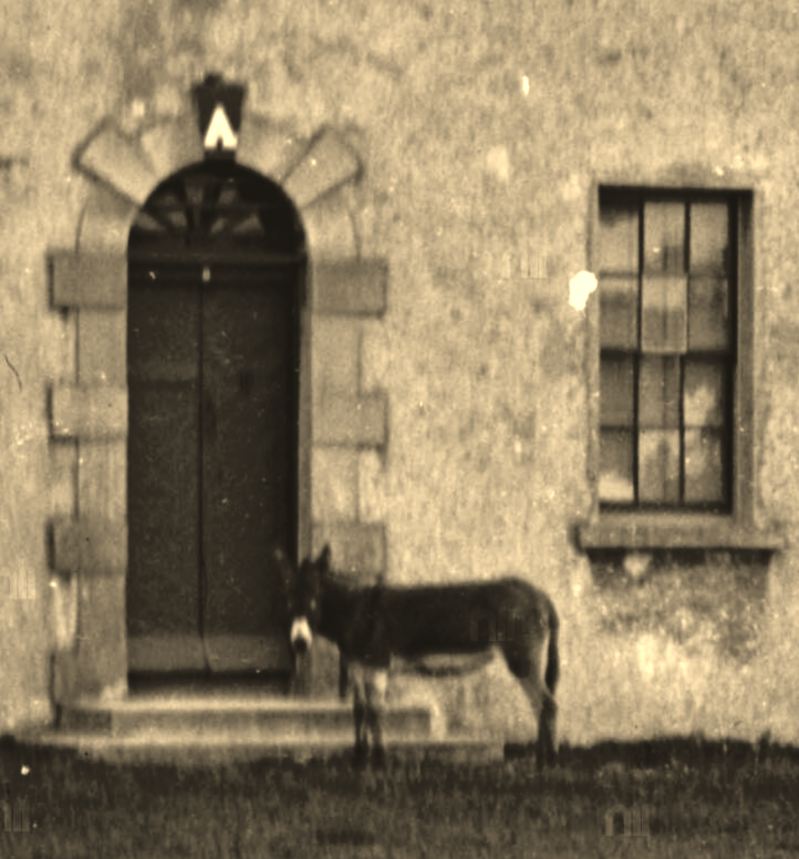
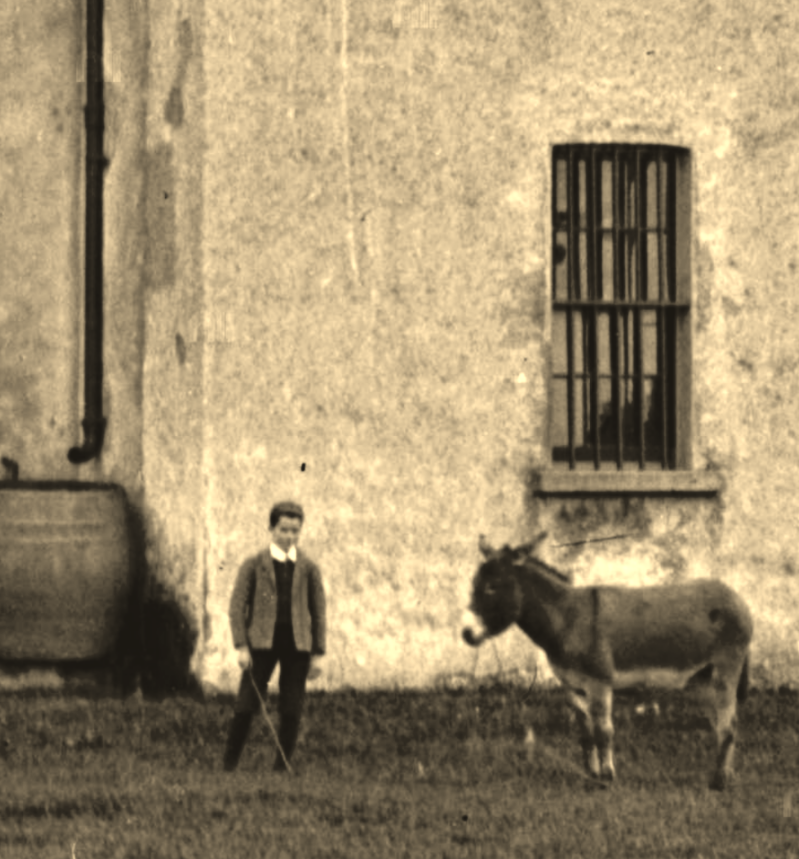

Barrack room with mural over the fireplace

Close-up of Barrack room mural




The North Tipperary Miltia and Mutiny in 1856 will forever be associated with the Barracks



Stables
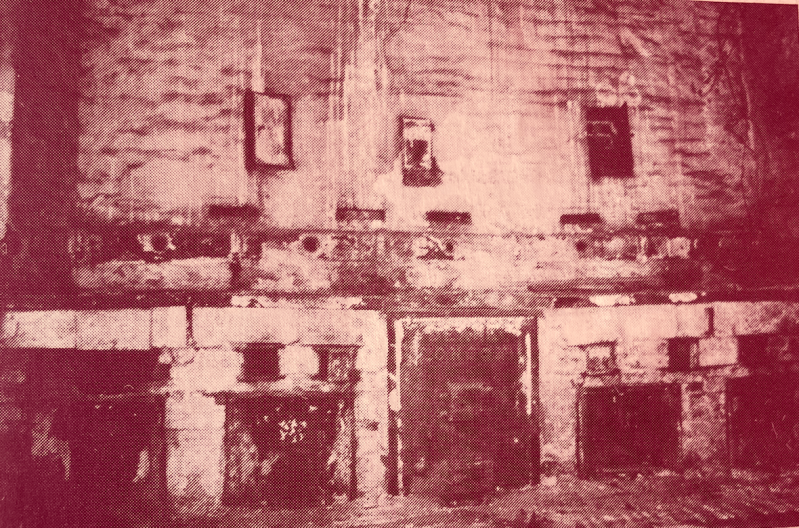
Kitchen area

The War Years

IRA Intelligence report on British Military present at Nenagh during October 1921. There were 320 Troops and 24 Officers. Of interest is Colonel Wyatt of the North Staffordshire Regiment who was one of the panel of men tasked with choosing the body for the Tomb of the Unknown Soldier at Westminster
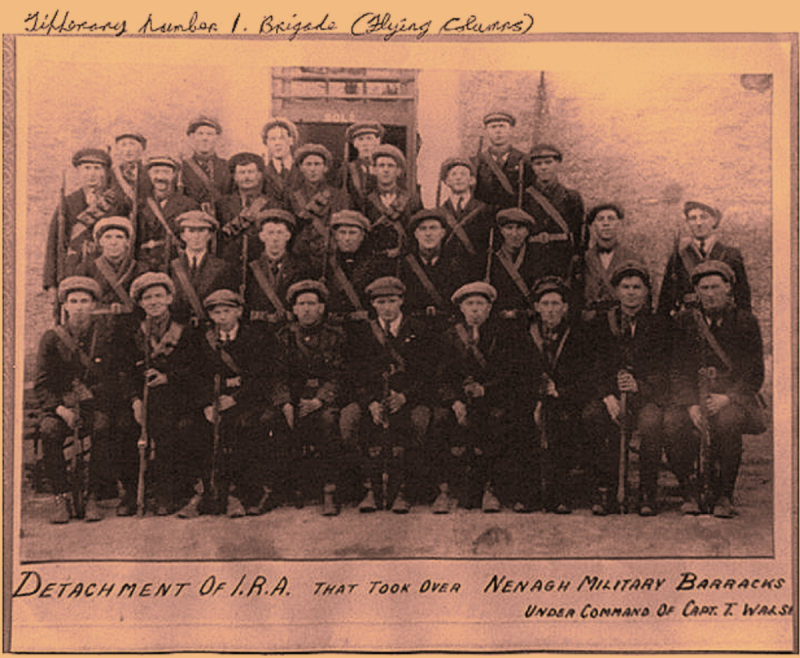
The Liberators. At 2pm, 14/02/1922, IRA personnel from Laois and North Tipperary formed up at Nenagh Courthouse and paraded up Summerhill to the Barracks. The Laois IRA were led by Captain Terence Byrne, who formally took possession of the site on behalf of the State. The honour of leading the local contingent was given to Captain Tom Walsh from Crowle, Cloughjordan, on account of he being the youngest Captain in the 1st Tipperary Brigade. He is seated Front Row, 5th from the left. 4th from left is Comdt. Liam Hoolan


Combined North Tipperary/Laois IRA after the takeover outside the main building in Nenagh Military Barracks
The Post War Years


An aerial view from a British plane in 1933









Some of the many personnel associated with the Barracks
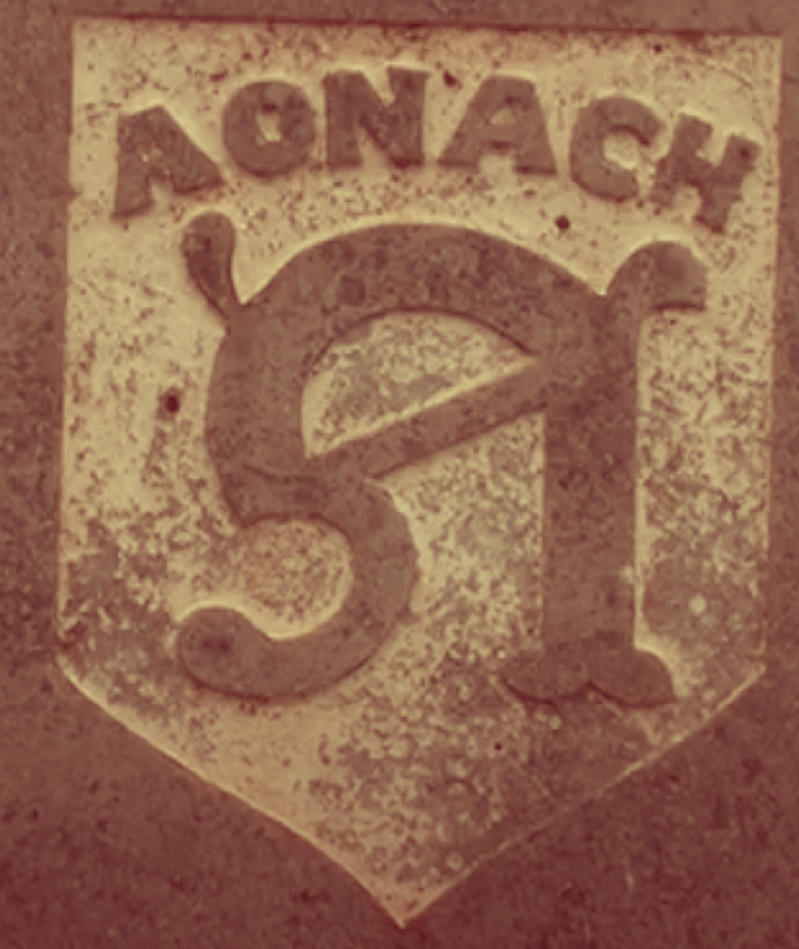

The query is......whatever happened to these icons of Nenagh's more recent military history...???
The Barracks Venue



The Barracks maintained a continuing function as a centre for entertainment within the town with Show jumping, concerts, carnivals and fairs taking place on the parade ground and adjacent field.
The Composting Years





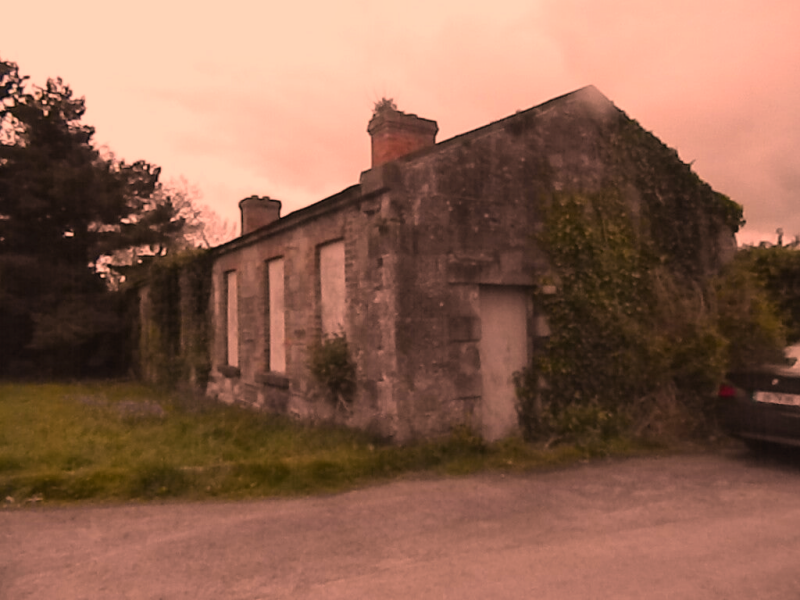












Eventually, after being abandoned and neglected, the rot set in leaving the Military Barracks to self compost and opening the roofs for pigeons and the elements. Some consider it an eyesore and a reminder of the years of oppression. For others it is an opportunity to embrace our local history, warts and all and utilise a symbol of oppression and militarism as a venue for integrated learning, museum, gallery and social centre. A steel frame built inside the Georgian facade would strengthen the ruins and allow a modern structure to be built within the walls thereby facilitating lifts and other modern amenities. Whatever else the building becomes, Nenagh does not need another carpark.
The debate continues....what to do but still awaits someone to take responsibility and control. There are plenty who are happy to avail of any commemoration ceremony to use as a photo opportunity in furthering their political careers but their silence on other occasions is deafening.
Press

Locals take refuge from Storm - 06/01/1839
- Nenagh & Its Neighbourhood

13/09/1839

November 1866

A letter from a concerned Nenagh citizen to the Daily Express - 29/03/1867

Deplorable state of the Barracks
Freemans Journal - 11/01/1879

09/01/1908

Crown Forces Leave as IRA take over -
Leinster Reporter - 25/02/1922

Nenagh News - 08/07/1922

Poblacht 28/09/1922

THE BARRACKS AS HOUSING
The Irish Times - 07/08/1926

Nenagh Guardian - 21/02/1925


Create Your Own Website With Webador